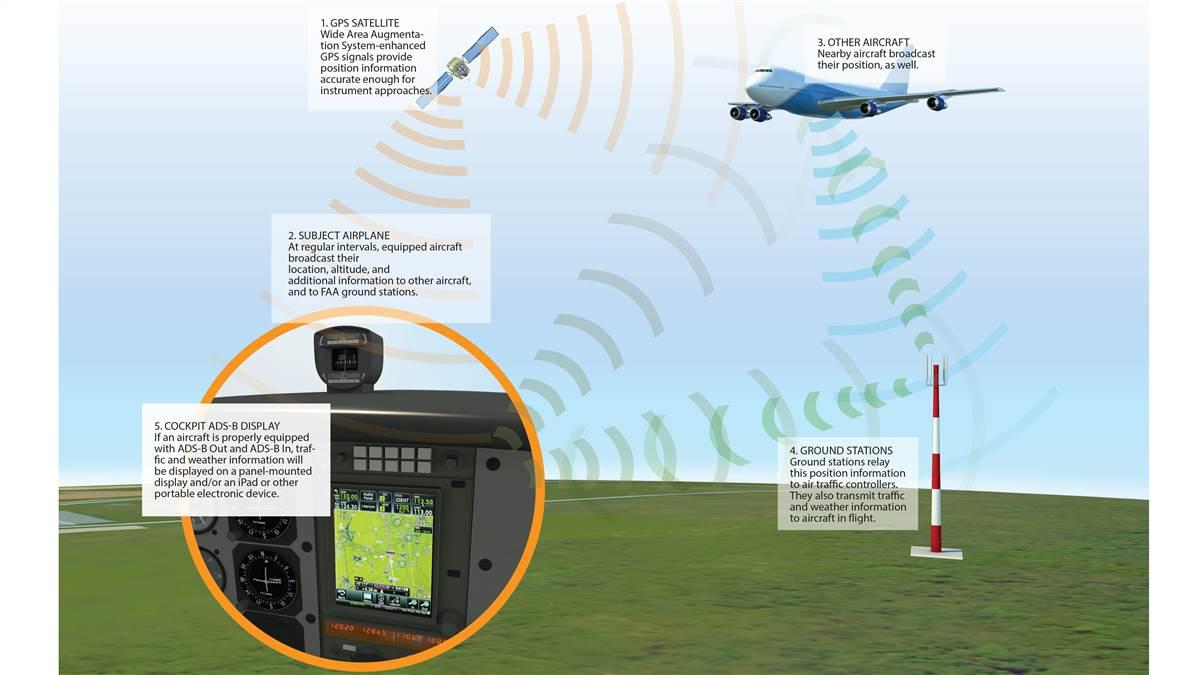
Automatic Dependent Surveillance-Broadcast, or ADS-B, is one of the primary technologies behind the FAA’s Next Generation Air Traffic Control System. Aircraft transmit a highly accurate, enhanced GPS-determined location to other aircraft and ground stations. Air traffic controllers can use the data for traffic separation, including in areas where today there is no radar coverage. The FAA is requiring ADS-B Out transmitters beginning January 1, 2020, in order to fly in most airspace where a Mode C transponder is required today; ADS-B In, which is optional, provides subscription-free display of traffic and weather information in the cockpit.
More about ADS-B
Aircraft owners in the United States can choose from two technologies for complying with the FAA’s January 1, 2020, ADS-B Out mandate. A Universal Access Transceiver, or UAT, operates on 978 MHz (978 UAT). UAT equipment costs generally are lower, and this frequency can receive free weather information. The other choice is the 1090ES datalink, using a Mode S Extended Squitter transponder (1090 MHz; “ES” refers to ADS-B information appended to the Mode S data). 1090ES is required above 18,000 feet, everywhere outside of the United States with an ADS-B requirement, and for Part 135 operations. However, 1090ES does not receive weather data. Some ADS-B installations receive traffic information on both ADS-B frequencies. But this is not required; ground stations (see illustration) receive 978 UAT data and rebroadcast it on 1090 MHz—and, likewise, relay 1090ES data over 978 MHz. Equipping to receive ADS-B In services is optional. These include Flight Information System-Broadcast (FIS-B), which is delivered only over the 978 UAT datalink and includes METARs, TAFs and amendments, Nexrad precipitation maps, notams, sigmets and convective sigmets, and winds and temperatures aloft. Portable receivers allow the display of ADS-B In data on tablet computers; note that if your aircraft is not equipped with ADS-B Out, the ADS-B In traffic information will not be complete.
For more information, see AOPA’s online ADS-B resources (www.aopa.org/adsb). Aircraft owners should check out the ADS-B selection tool (www.aopa.org/adsbselector).



